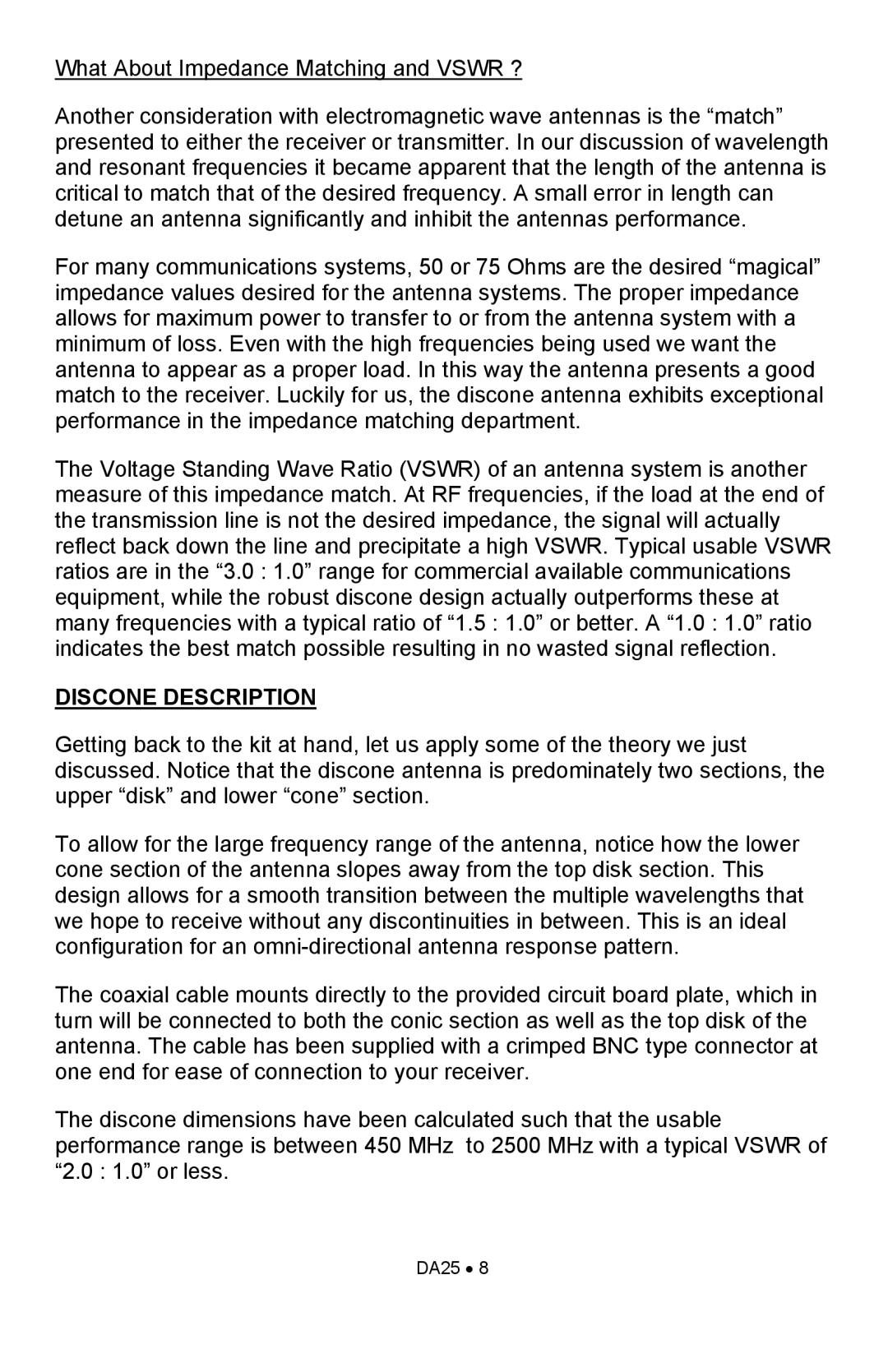What About Impedance Matching and VSWR ?
Another consideration with electromagnetic wave antennas is the “match” presented to either the receiver or transmitter. In our discussion of wavelength and resonant frequencies it became apparent that the length of the antenna is critical to match that of the desired frequency. A small error in length can detune an antenna significantly and inhibit the antennas performance.
For many communications systems, 50 or 75 Ohms are the desired “magical” impedance values desired for the antenna systems. The proper impedance allows for maximum power to transfer to or from the antenna system with a minimum of loss. Even with the high frequencies being used we want the antenna to appear as a proper load. In this way the antenna presents a good match to the receiver. Luckily for us, the discone antenna exhibits exceptional performance in the impedance matching department.
The Voltage Standing Wave Ratio (VSWR) of an antenna system is another measure of this impedance match. At RF frequencies, if the load at the end of the transmission line is not the desired impedance, the signal will actually reflect back down the line and precipitate a high VSWR. Typical usable VSWR ratios are in the “3.0 : 1.0” range for commercial available communications equipment, while the robust discone design actually outperforms these at many frequencies with a typical ratio of “1.5 : 1.0” or better. A “1.0 : 1.0” ratio indicates the best match possible resulting in no wasted signal reflection.
DISCONE DESCRIPTION
Getting back to the kit at hand, let us apply some of the theory we just discussed. Notice that the discone antenna is predominately two sections, the upper “disk” and lower “cone” section.
To allow for the large frequency range of the antenna, notice how the lower cone section of the antenna slopes away from the top disk section. This design allows for a smooth transition between the multiple wavelengths that we hope to receive without any discontinuities in between. This is an ideal configuration for an
The coaxial cable mounts directly to the provided circuit board plate, which in turn will be connected to both the conic section as well as the top disk of the antenna. The cable has been supplied with a crimped BNC type connector at one end for ease of connection to your receiver.
The discone dimensions have been calculated such that the usable performance range is between 450 MHz to 2500 MHz with a typical VSWR of “2.0 : 1.0” or less.
